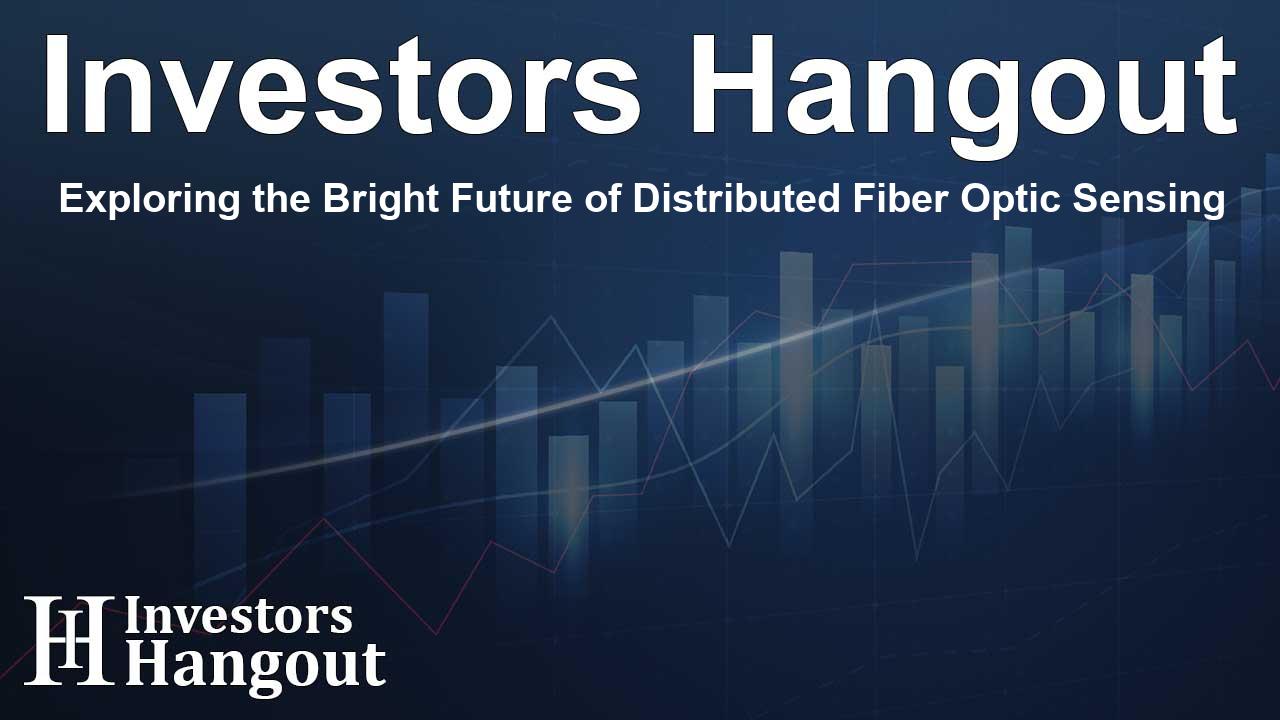Exploring the Bright Future of Distributed Fiber Optic Sensing

Growth Projections for the Distributed Fiber Optic Sensor Market
The distributed fiber optic sensor market exemplifies an exciting transition, having been valued at approximately US$ 1,415.6 million recently. Projections suggest a remarkable ascent to US$ 3,650.6 million by 2033, reflecting a remarkable compound annual growth rate (CAGR) of 11.1% from 2025 until 2033.
A Need for Advanced Sensing Technologies
This surging growth underscores a broader trend in industrial monitoring and infrastructure safety, as organizations embrace advanced sensing technologies. Distributed fiber optic sensors are revolutionizing safety and efficiency across sectors. These sensors transform ordinary optical fiber cables into ingenious, continuous sensory networks capable of detecting minute changes in parameters like temperature and strain over extensive distances.
Expanding Capabilities and Applications
Insights from recent market analysis indicate not only significant growth but also advancements in capabilities, strategic investments, and a surge in practical applications. Key findings demonstrate how stakeholders can harness this promising sector for profitable growth.
Technological Innovations leading the Charge
The distributed fiber optic sensor market is witnessing a technological explosion, unlocking unprecedented levels of operational efficiency. A next generation of Distributed Acoustic Sensing (DAS) interrogator units has emerged, showcasing extraordinary capabilities in sensing precision and performance.
Key Findings Influencing Market Dynamics
For stakeholders interested in the landscape, several critical factors emerge. A notable finding indicates that North America is expected to hold approximately 32% of the market share in 2024. With temperature sensing alone accounting for 48% of applications, it demonstrates the sector’s focus on optimizing industrial environments.
Significant Growth Drivers
Several trends drive this market's expansion. A rising demand for real-time monitoring of essential infrastructure, the need for superior performance in challenging environments, and an increasing focus on predictive maintenance are pivotal to success. This combination empowers industries to maximize operational efficiency and ensure safety.
Emerging Trends in the Industry
The integration of artificial intelligence (AI) and machine learning heralds a new era in data analytics, especially evident in distributed fiber optic sensors. Companies are leveraging these advanced technologies to enhance their systems significantly.
Real-World Success Stories
Real-world deployments signal the technology's broad applicability across critical sectors. A noteworthy pilot program by a major transit authority is set to utilize DAS technology to monitor rail integrity and detect potential safety hazards. This project illustrates the urban transit sector’s commitment to adopting innovative monitoring solutions and could set a precedent for future projects globally.
Investments Propel Growth
The energy sector shows remarkable enthusiasm for these technologies. Recent projects have revealed immense potential for high-definition seismic surveys using cutting-edge DAS systems. This demonstrates an increasing trend of deploying these systems for real-time monitoring, resulting in safer and more efficient operations.
Infrastructure Boom in Emerging Markets
The demand for distributed fiber optic sensors is intricately linked to rising global infrastructure expenditures, particularly in fast-developing economies. A massive bridge and transportation project in a significant developing country illustrates how government investments in infrastructure serve as a vital catalyst for the distributed fiber optic sensor market.
Data Management Challenges
While opportunities abound, the burgeoning data generated by these systems poses challenges that require immediate attention. Effective AI and machine learning platforms are now critical to process and interpret the vast amount of data generated, ensuring stakeholders can extract actionable insights from their investments.
Navigating Market Challenges
The rapid growth of the distributed fiber optic sensor market is not without obstacles. A shortage of skilled professionals and supply chain hurdles are major concerns impacting deployment timelines. With a significant delay in commissioning projects prevalent in specific regions, companies are actively working to develop targeted training programs to bridge this skills gap.
Strategic Collaborations and Innovations
The competitive landscape reflects vibrant activity characterized by strategic corporate partnerships and continuous product innovations. Leading organizations are forming alliances to enhance effectiveness in unconventional resource development, showcasing the collaborative nature of the overarching market.
Looking Ahead: The Future of Sensing Technology
Ultimately, the future of the distributed fiber optic sensor market is closely tied to AI integration and further advancements. An innovative study showcasing a machine-learning-assisted fiber optic sensing system that can continuously monitor various physiological metrics illustrates the transformative potential within the medical and industrial sectors alike.
Key Players Shaping the Future
The market features numerous key players committed to driving forward innovation. This dynamic ecosystem is witnessing exciting product launches and collaborations, all contributing to a technologically robust future for distributed fiber optic sensors.
Frequently Asked Questions
What drives the growth of the distributed fiber optic sensor market?
The increasing demand for real-time monitoring and predictive maintenance in various industries significantly contributes to market growth.
How will AI impact the distributed fiber optic sensor market?
AI and machine learning will enhance data analytics and operational efficiency, unlocking new applications and insights.
Which regions are expected to dominate the market?
North America is projected to be a leading player, accounting for a substantial market share in the upcoming years.
What are the primary applications of distributed fiber optic sensors?
The technology is widely applied in temperature sensing, rail infrastructure monitoring, and urban infrastructure management.
What challenges does the market face?
Key challenges include supply chain complexities and a shortage of skilled professionals necessary for deploying these advanced systems effectively.
About The Author
Contact Addison Perry privately here. Or send an email with ATTN: Addison Perry as the subject to contact@investorshangout.com.
About Investors Hangout
Investors Hangout is a leading online stock forum for financial discussion and learning, offering a wide range of free tools and resources. It draws in traders of all levels, who exchange market knowledge, investigate trading tactics, and keep an eye on industry developments in real time. Featuring financial articles, stock message boards, quotes, charts, company profiles, and live news updates. Through cooperative learning and a wealth of informational resources, it helps users from novices creating their first portfolios to experts honing their techniques. Join Investors Hangout today: https://investorshangout.com/
The content of this article is based on factual, publicly available information and does not represent legal, financial, or investment advice. Investors Hangout does not offer financial advice, and the author is not a licensed financial advisor. Consult a qualified advisor before making any financial or investment decisions based on this article. This article should not be considered advice to purchase, sell, or hold any securities or other investments. If any of the material provided here is inaccurate, please contact us for corrections.
